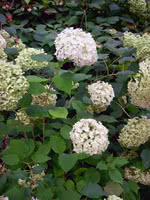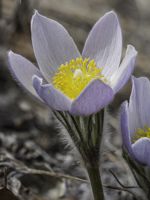Mon-Fri 9am - 5pm Mountain time
Annabelle Hydrangea vs Prairie Crocus
Hydrangea arborescens Annabelle
Pulsatilla nuttalliana (Anemone patens)
NOT AVAILABLE THIS SEASON - MIGHT RETURN
Annabelle Hydrangea is a cold hardy shrub that is well known for its large, compact clusters of white flowers. Unlike other flowering species, Hydrangeas do best in partial shade. However, they are capable of growing in full sun if the soil is kept consistently moist.
Blooms occur on new wood, so regular pruning is encouraged in late winter. Try Annabelle Hydrangea as a border or on its own.
Prairie Crocus is a native perennial wildflower that is often considered one of the first signs of spring. The flowers can range from purple, pale blue, to white and often appear before the snow has fully melted. It can bloom a month earlier than other spring flowers, providing an early source of pollen for a variety of pollinators.
The plant is covered in woolly white hairs, including the finely divided leaves, giving them a silvery appearance. Prairie Crocus leaves do not fully emerge until after it has bloomed. The spent blooms transform into fluffy, feathery seed heads. During the hot summer months, the Prairie Crocus goes dormant and will repeat its life cycle the following spring.
The Prairie Crocus is Manitoba’s provincial flower.
Annabelle Hydrangea Quick Facts
Prairie Crocus Quick Facts
Toxicity: all parts toxic if eaten, sap can irritate skin

